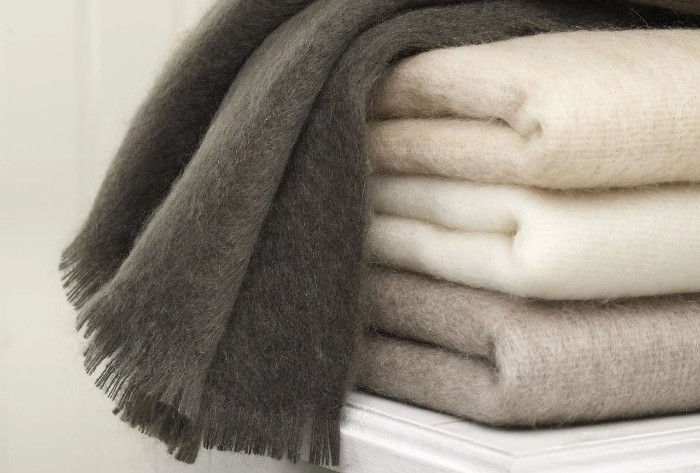Soft Power: The Quiet Luxury of Mohair Knitwear
- CH CH
- Aug 25
- 3 min read
In a fashion landscape increasingly defined by quiet luxury and tactile storytelling, mohair knitwear is enjoying a well-deserved renaissance. For brands seeking fibres that speak softly but carry unmistakable presence, mohair offers a compelling blend of elegance, performance, and emotional appeal.
Whether you're developing a capsule collection for a boutique label in or refining your AW line for discerning clients, mohair deserves a place in your textile vocabulary.
What Is Mohair, Really?
Mohair is the long, lustrous fibre harvested from the Angora goat—not to be confused with Angora rabbit. Known for its silky sheen and exceptional durability, mohair is often blended with wool, silk, or nylon to enhance its performance and drape.
Key characteristics:
Lustre: A natural glow that elevates even the simplest silhouette.
Softness: Gentle against the skin, especially in finer gauges.
Resilience: Stronger than wool, with excellent shape retention.
Thermal Regulation: Warm yet breathable—ideal for trans-seasonal wear.
Quiet luxury isn’t about logos or loud statements. It’s about materials that whisper refinement. Mohair’s subtle halo and fluid movement lend garments a sense of depth and sophistication that’s hard to replicate with synthetic alternatives.
For brands focused on timeless design and elevated basics, mohair communicates quality without shouting. A brushed mohair jumper in a muted palette can anchor a collection with understated elegance.
Why Mohair Resonates with European & Australian Markets
Designers across Europe and Australia are increasingly drawn to fibres that align with values of sustainability, craftsmanship, and emotional connection. Mohair ticks all three boxes:
Sustainability: Responsible mohair production is traceable and low-impact, especially when sourced from certified farms in South Africa.
Craftsmanship: Mohair responds beautifully to hand-finishing, brushing, and dyeing techniques—ideal for brands that value artisanal detail.
Emotional Texture: The tactile appeal of mohair invites wearers to touch, feel, and connect—an important factor in retail environments where sensory experience drives purchase.
Design Applications: From Lofty Jumpers to Lightweight Layers
Mohair’s versatility makes it suitable for a range of knitwear applications:
Application | Recommended Blend | Gauge Range | Notes |
Brushed jumpers | Mohair/Nylon (70/30) | 3–5 gg | Lofty, voluminous, ideal for AW lines |
Lightweight cardigans | Mohair/Silk or Mohair/Wool | 7–12 gg | Soft drape, elegant layering pieces |
Accessories (scarves etc) | 100% Mohair or Mohair/Poly | 5–7 gg | High sheen, tactile appeal |
Fashion-forward pieces | Mohair/Metallic or Mohair/Elastane | Varies | Adds texture and stretch |
Mohair behaves differently from standard wool blends. Here are a few tips for product teams:
Brushing: Enhances halo and softness—ideal for statement pieces.
Shrinkage: Mohair has low shrinkage but requires careful finishing.
Colour Absorption: Takes dye well, especially in jewel tones and pastels.
Pilling: Less prone than wool, but blend ratios matter.
Working with mills experienced in mohair processing is key. Sampling is essential, especially when targeting specific handfeel or silhouette.
Positioning Mohair in Your Collection
Mohair works beautifully as a hero fibre or a supporting act. Consider these strategies:
Elevated Essentials: A mohair-blend crewneck can become a signature item.
Seasonal Highlights: Use mohair for limited-edition colourways or brushed textures.
Storytelling: Educate your customers on the fibre’s origin, feel, and longevity—quiet luxury thrives on narrative.
Mohair knitwear doesn’t demand attention—it earns it. For small to medium-sized brands looking to differentiate through material choice and emotional resonance, mohair offers a rare combination of softness, strength, and story.
In a world chasing authenticity and tactile pleasure, mohair is not just a fibre—it’s a feeling.






Comments